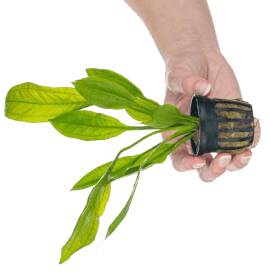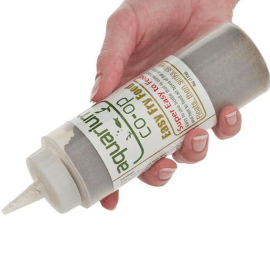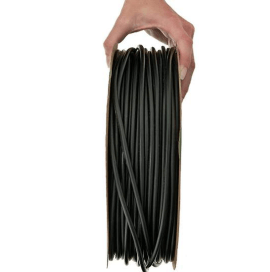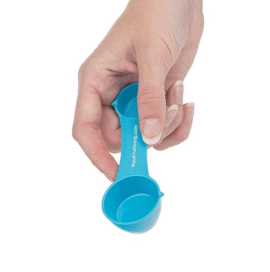Top 10 Aquarium Fish That Love Hard Water
Did you know that certain aquarium fish may not do well in your home because they prefer water parameters that are very different from your tap water? For example, if the pH and GH (or general hardness) coming out of your faucet are very high, then discus, crystal shrimp, and other creatures from soft water environments may be more difficult to keep. That being said, do not despair if your water hardness is off the charts and considered to be “liquid rock.” Many species thrive in hard water environments, so we’ve listed our top 10 community fish that can live in high pH and GH conditions.
1. Platy

Xiphophorus maculatus
This lively, beginner-friendly fish is one of our favorite livebearers to keep because of their bold colors, inexpensive cost, and ease of care. They only grow to 2–3 inches (5–7 cm) long and are very accepting of a broad spectrum of parameters, including harder water. While the southern platy (X. maculatus) is more of a tropical fish, the variatus platy (X. variatus) is accustomed to cooler waters and can live in an unheated tank at home. Like many livebearers, platies are great clean-up crew members that not only pick up leftover fish food around the tank but also nibble on algae without eating the aquarium plants. For more details about their requirements, see our platy article.
2. Congo Tetra

Phenacogrammus interruptus
The most common tetras in the aquarium hobby are from South America where the waters often have lower pH and GH, but the Congo tetra is an African species that can easily live in pH levels of 6.0–8.0 and harder water. The colorful males have a couple of shiny red-orange and blue horizontal stripes, while the females are more silvery-gold. As a larger schooling fish that grows up to 3 inches (8 cm) long, they are more suitable for medium to large aquariums. They do well with similar-sized tank mates that won’t nip their flowy fins — like rainbowfish, livebearers, and peaceful catfish.
3. Guppy

Poecilia reticulata
Guppies are an incredibly popular fish in the aquarium hobby because of the amazing selection of colors, small size, and friendly personality. We get so much enjoyment watching them swarm together during feeding times and discovering little babies hiding in the dense foliage. However, they must have harder water or high GH in order to do well in your aquarium. If your tap water is naturally soft, you can still keep guppies as long as you dose the tank with mineral supplements, such as Wonder Shell or Seachem Equilibrium. Also, while they will happily eat almost anything you offer, consider providing some calcium-enriched foods as part of their diet. See our care guide on guppies for more details.
4. Molly

Poecilia latipinna
Mollies are another livebearer that cannot live without hard, alkaline water. Similar to guppies, mollies are often raised on fish farms that use brackish water — a mixture of fresh and salt water that has high mineral content. When those mollies are sold at fish stores and then brought home to our freshwater aquariums, they are prone to developing health issues, such as shimmying and other infections. If you have really hard water (or are willing to regularly dose minerals into your tank), mollies are a super fun fish to play with. Most pet stores sell colorful strains of P. sphenops (short-fin molly) and P. latipinna (sailfin molly), and they can range from 2–5 inches (5–13 cm) in size. For more info, read the full molly care article.
5. Flagfish

Jordanella floridae
This 2.5-inch (6 cm) North American pupfish gets its common name from the male’s beautiful coloration that looks like the stars and stripes of the United States flag. Their mouths are the perfect shape for ripping off hair algae and black beard algae, although they may accidentally damage your more delicate plants in the process. They are extremely hardy and can handle a huge range of pH and temperature, so you will have no problems putting them in a hard water aquarium with or without a heater. If you’re looking for something interesting to breed, Florida flagfish are egg layers that tend to spawn when the water is on the warmer side. The adults do not show parental care, so the fry will have a better chance of survival if you provide plenty of thick cover or move them into a separate breeding setup.
6. Pristella or X-Ray Tetra

Pristella maxillaris
This beginner-friendly species is not specifically a hard water fish, but we wanted to include it because of its ability to live to a wide range of pH and GH. The common name “x-tray tetra” comes from its translucent body that allows you to see some of its internal organs. This 2-inch (5 cm), deeper-bodied schooling fish comes in many color variations — such as normal silver, albino gold, and fluorescent GloFish types. Get a group of at least six or more so they will feed comfortable in their new home, and feed them an assortment of flakes, pellets, daphnia, and other fish foods.
7. Odessa Barb

Pethia padamya
Odessa barbs are known for the wide, horizontal band of bright red scales running down their sides with black markings and yellow finnage. They come from high altitude ponds and rivers in the Southeast Asian country of Myanmar, where they are adaptable to both moderately soft and very hard waters. They are peaceful enough to live in a 29-gallon community tank or larger but should be paired with other fast-moving species who can keep up with their high energy level. Keep this 2.5-inch (6 cm) schooling fish in a pack of six or more, and put them in a planted tank full of greenery so that their scarlet hues will really shine.
8. Turquoise Rainbowfish

Melanotaenia lacustris
The gorgeous Lake Kutubu rainbowfish has a striking turquoise back and silvery-yellow belly, divided by a black, horizontal stripe in the middle. We love them because both the males and females are colorful, especially when they are in breeding mode and the male flashes a neon stripe on his forehead to court his favorite girl. At 4 inches (10 cm) long, this schooling fish would love to live in 4-foot (1.2 m) aquarium or larger that’s filled with alkaline pH and hard GH, similar to their hometown waters in Papua New Guinea. Rainbowfish are peaceful and speedy swimmers, so put them with other tropical community species that can keep up with their fast-paced lifestyle.
9. Dwarf Neon Rainbowfish

Melanotaenia praecox
If the turquoise rainbow is a little too hefty for your tastes, try the 3-inch (8 cm) neon dwarf rainbow instead. They are an excellent alternative to those soft water, South American tetras that you want but can’t keep in your hard tap water. The males come with neon blue scales and red fins, while the females have a more silvery body with yellow fins. While you may be tempted to fill the tank with mostly males, get a ratio of more girls than boys because then the guys will show off their best breeding colors. Because of their smaller mouths, we like to feed them floating or slowly sinking foods like daphnia, frozen cyclops, and flake foods. See our complete care guide to get the full story.
10. Golden Wonder Killifish

Aplocheilus lineatus
Brighten up your aquarium with this gorgeous centerpiece fish that has a big personality and a big mouth. Ranging from 3–4 inches (8–10 cm) in length, this eye-catching specimen has a bright, golden yellow color and elongated body. As a surface dweller, they are notorious jumpers and must have a tight-fitting aquarium lid to prevent escape. They thrive in harder water and can live with other medium-sized community tank mates that won’t fit in their large jaws. Satiate their appetites with meaty foods like bloodworms, brine shrimp, and Vibra Bites. Plus, use floating plants and other obstacles to block line of sight in case the males get feisty towards each other or keep chasing the females around.
Hopefully, this high-level overview gave you some inspiration for the next fish to try in your hard water aquarium. Most of these species go well together, so do some further research on their care requirements to check for compatibility. While we do not ship live fish, you can check out our preferred online retailers to see the latest species they have in stock.




